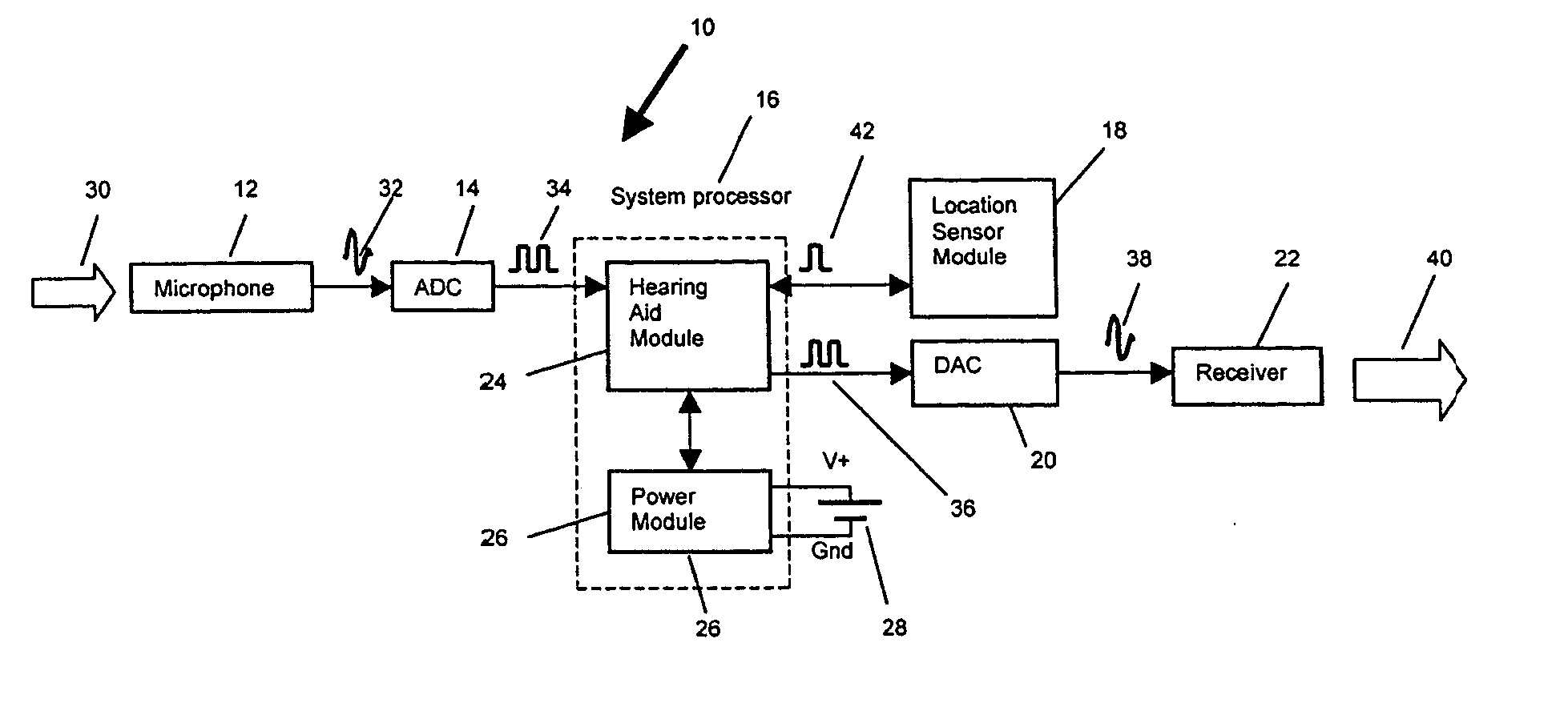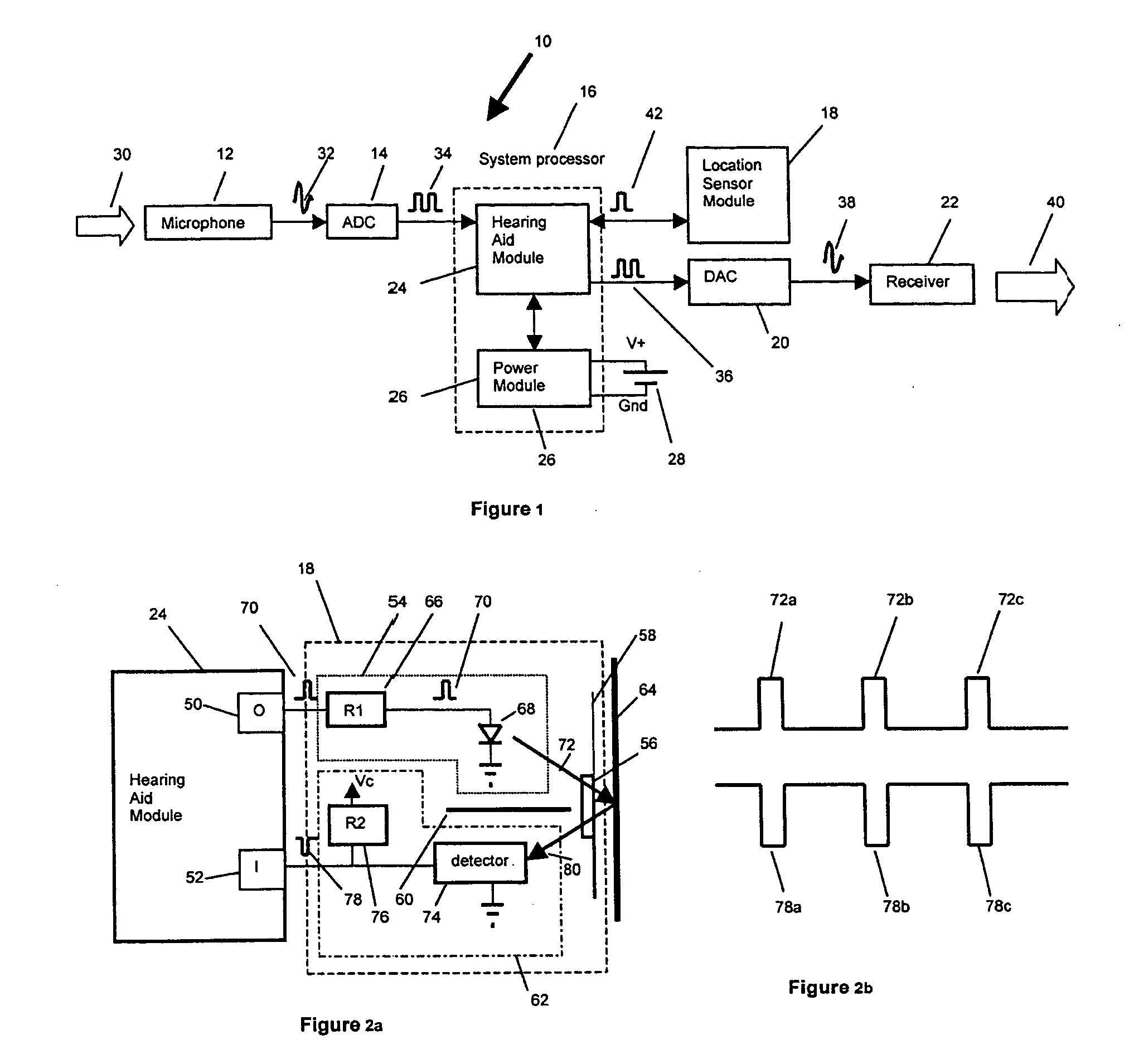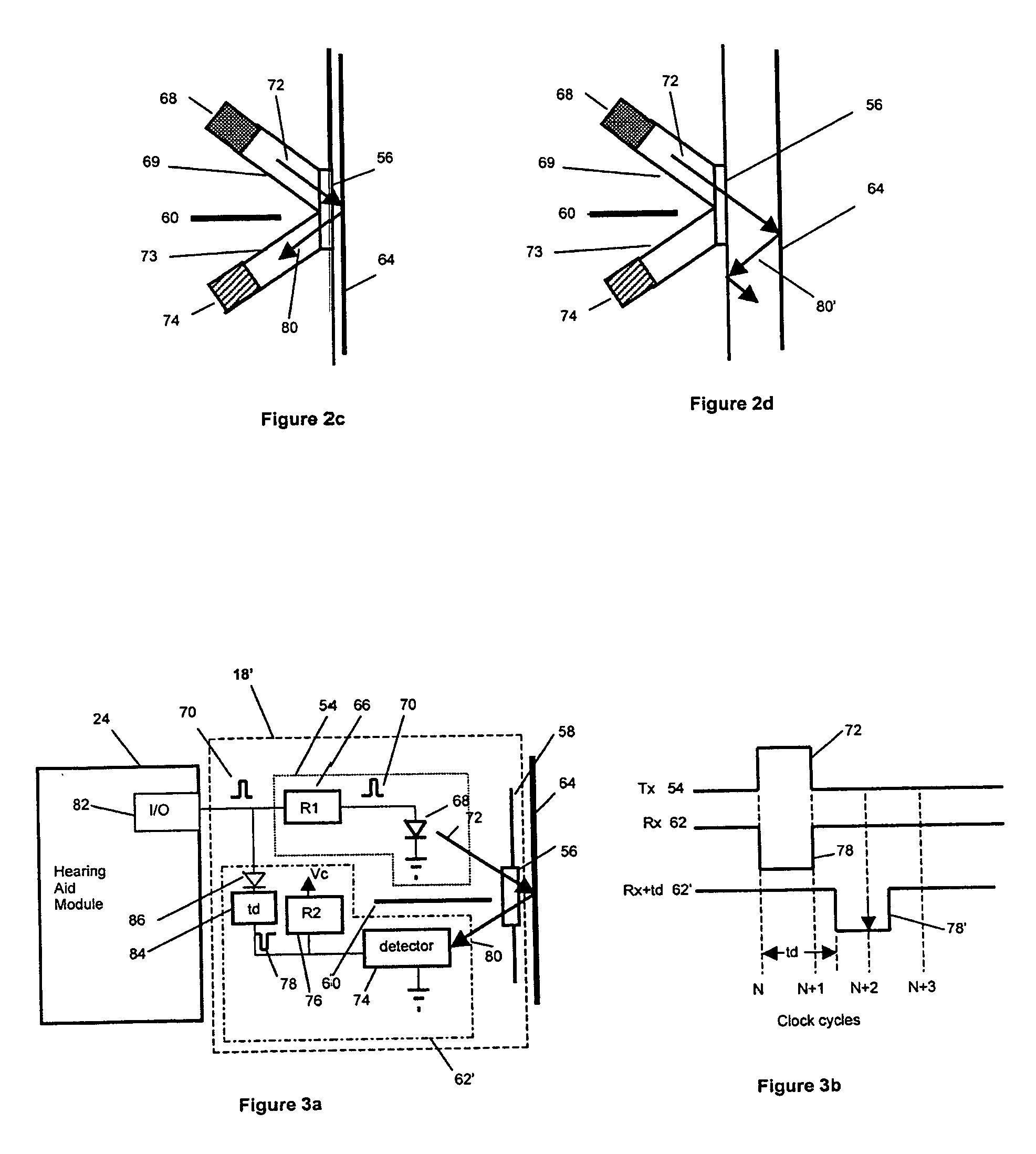Intelligent hearing aid
a hearing aid and intelligent technology, applied in the field of hearing aids, can solve the problems of reducing upseting the hearing aid user, and reducing the battery power of the hearing aid, and achieve the effect of increasing the comfort level associated with wearing the hearing aid and low power consumption mod
- Summary
- Abstract
- Description
- Claims
- Application Information
AI Technical Summary
Benefits of technology
Problems solved by technology
Method used
Image
Examples
Embodiment Construction
[0029] In the following detailed description, numerous specific details are set forth in order to provide a thorough understanding of the invention. However, it will be understood by those of ordinary skill in the art that the invention may be practiced without these specific details. In other instances, well-known methods, procedures and components have not been described in detail so as not to obscure the invention. Further, it should be understood that there are many variations of hearing aids because of variations in input channels, program switches, etc. Accordingly, exemplary embodiments of hearing aids in accordance with the invention are shown and described but are not meant to limit the invention.
[0030] A hearing aid in accordance with the invention is referred to as an intelligent hearing aid because the hearing aid has a location sensor module for determining the location of the hearing aid. Based on the location information, the hearing aid automatically operates in eit...
PUM
 Login to View More
Login to View More Abstract
Description
Claims
Application Information
 Login to View More
Login to View More - R&D
- Intellectual Property
- Life Sciences
- Materials
- Tech Scout
- Unparalleled Data Quality
- Higher Quality Content
- 60% Fewer Hallucinations
Browse by: Latest US Patents, China's latest patents, Technical Efficacy Thesaurus, Application Domain, Technology Topic, Popular Technical Reports.
© 2025 PatSnap. All rights reserved.Legal|Privacy policy|Modern Slavery Act Transparency Statement|Sitemap|About US| Contact US: help@patsnap.com



